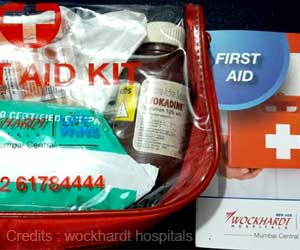A quick, inexpensive, and easy-to-use leptospirosis test strip kit developed by researchers helps lower the risk of disability from internal organ failure and death.

‘The leptospirosis test strip is a stick similar to a pregnancy test that’s easy to use. The result can be read with naked eyes, enabling doctors to diagnose quickly even in the acute stage.’





A research team led by Assoc. Prof. Kanittha Pattarakul, M.D., Department of Microbiology, Faculty of Medicine, Chulalongkorn University has developed an innovative lateral flow strip test for leptospirosis screening that is quick and easy to use so that patients can be diagnosed and treated properly to avoid life-threatening dangers. Leptospirosis – a serious threat that comes from water and the animals around you
According to Assoc. Prof. Dr. Kanittha Pattarakul “leptospirosis is a serious threat during the rainy season. Most people tend to think that leptospirosis is carried only by ‘rats’ and found only in fields or flooded areas. The disease is transmitted from animals to humans and caused by ‘leptospira’ bacteria which is found in the kidneys of a wide variety of animal reservoirs such as rats, pigs, goats, sheep, cattle, buffaloes, dogs, and cats. These animals may or may not show signs of illness, but can spread the disease through their urine that contaminates the water and soil. The bacteria can live for months in wetland or waterlogged areas such as puddles, ditches, waterfalls, rivers, canals.”
To prevent infection, Assoc. Prof. Dr. Kanittha recommends starting with keeping the house clean and avoid walking barefoot or soaking feet in stagnant water, because bacteria may enter the body through pruney skin from prolonged soaking, wounds, and even scratches on the skin. If it is unavoidable, or for those who have to work in stagnant water, protective footwear, such as ankle boots should be worn. If it is necessary to come into contact with these animals, protective equipment such as gloves should be used. Moreover, leptospira bacteria can also enter the body through the conjunctiva or the mouth when coming into contact with contaminated water like swimming, or drinking. So good hygiene is very important.
Symptoms and treatment guidelines for leptospirosis
Advertisement
In the early or acute stage during the first week after infection, the bacteria are in the bloodstream. Patients have nonspecific symptoms such as fever, muscle aches, nausea, vomiting, and a rash. This stage of illness can be treated with antibiotics.
Diagnosis of leptospirosis – “The sooner, the better”
Currently, the standard method for leptospirosis diagnosis requires a specialist in a reference laboratory performing a blood test to detect the pathogen’s antibodies which can cost as high as 1,200–1,500 baht per sample. The test takes at least one-two week to obtain results. Other self-test kits that are currently available are antibodies tests. But in the early stage, the body still does not produce any antibodies. Therefore, the test results are often negative. Testing for infectious DNA requires expensive reagents and equipment, so patients may not get an accurate diagnosis from the start.
“It is best to detect the disease early on,” said Assoc. Prof. Dr. Kanittha in discussing the importance of the innovative lateral flow strip test. It detects leptospira antigens in the blood, therefore, the infection can be detected in the early stages of the disease. The test strip set was developed by a team of researchers, including Asst. Prof. Amornpun Sereemaspun, M.D Department of Anatomy, Faculty of Medicine, Chulalongkorn University, Prof. Dr. Tanapat Palaga, Department of Microbiology, and Asst. Prof. Dr. Rojrit Rojanathanes, Department of Chemistry, both from the Faculty of Science, Chulalongkorn University, and Prof. Tararaj Dharakul, M.D. from the National Nanotechnology Center, the National Science and Technology Development Agency (NSTDA).
Leptospirosis test strip set is “easy and yields fast results”
The result is available within 15-20 minutes, and it costs under 200 baht per set.
“The test strip will report the results in nanometer gold particles. If infected, the strip will appear purple or two red lines on the Test line (T) and the Control line (C). If the result is negative, only one line will appear on the control line (C),” said Assoc. Prof. Dr. Kanittha. She further stressed that the test strip has to be used under the supervision of doctors and used together with a medical history, physical examination results, lab results, and other history and surrounding risk factors, such as occupation, living environment, and history of contact with water sources.
Leptospirosis test strip set – the hope of community hospitals
The innovative test strip is set received a grant from the Faculty of Medicine, Chulalongkorn, and partial funding from the NSTDA Chair Professor fellowship 2013 to develop a prototype product that has a technological readiness at level 5. Application for petty patent has already been submitted.
At present, the research team and its network are applying for a grant to support the distribution of the test strips to be used in provincial hospitals and community hospitals.
“This test strip has been tested for accuracy in early screening at the laboratory level. It is currently undergoing sensitivity and specificity testing in the field with cooperation from the Provincial Public Health Office, provincial hospitals, and community hospitals in the network,” added Assoc. Prof. Dr. Kanittha. “The research team hopes that this innovation will help upgrade the capability of provincial hospitals and especially community hospitals to be ready to screen and treat patients and save their lives in time.”
Source-Newswise














